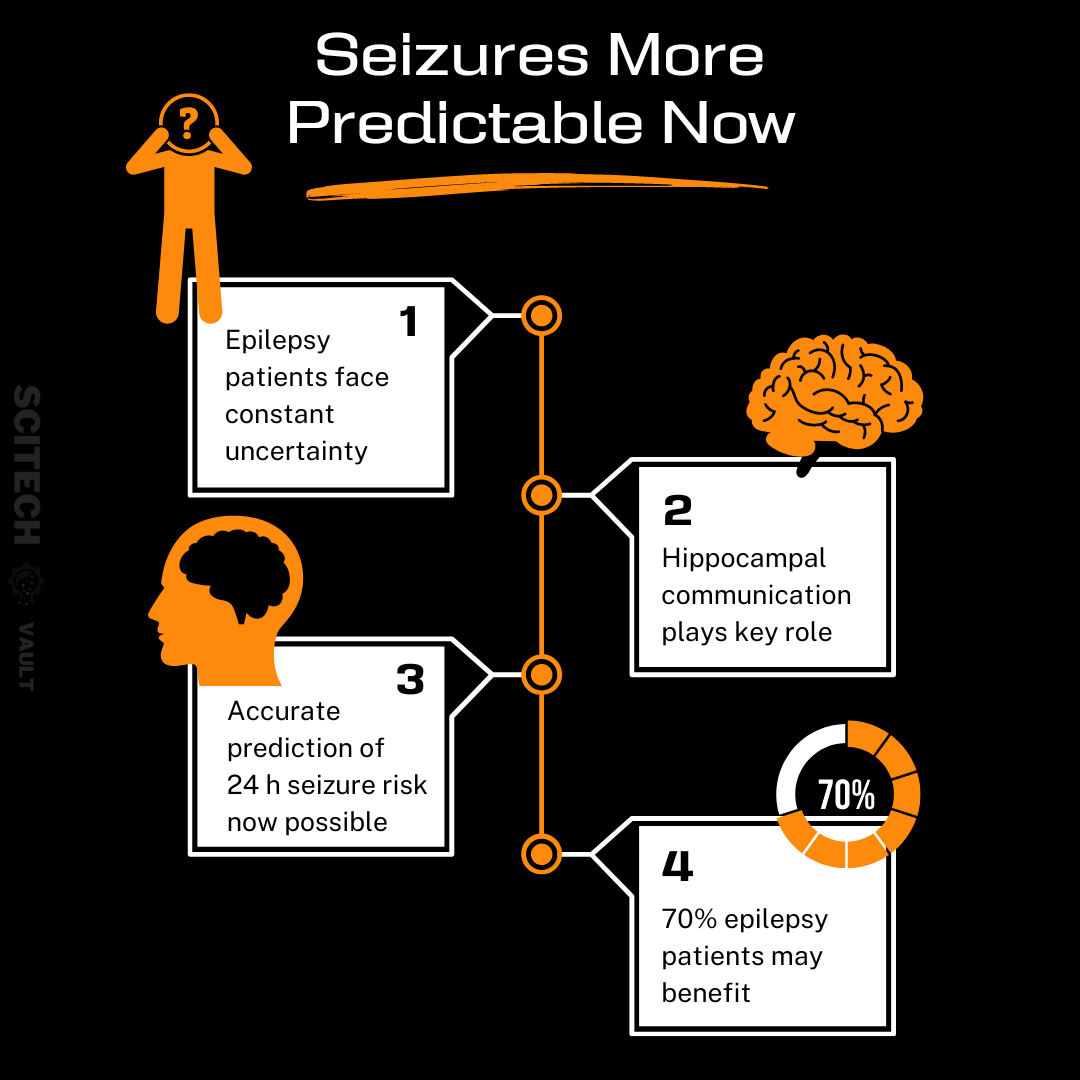Health
Allura Red AC: The Dye that Triggers Colitis in Mice
The dye is commonly used to color commercially available food products

“Jacob, stop eating those candies! Sophia, don’t touch that donut!” We all remember what our parents/grandparents used to tell us when we were kids. Besides and beyond the very obvious dental decay, there are multiple reasons why we must avoid eating food products colored with gorgeous-looking dyes. Every time we eat a synthetic food product, we take a risk. So let’s see learn more about “Allura Red AC.”
Allura Red AC and Colitis in Mice
Allura Red AC, also known by the names “FD&C Red 40” and “E129,” is a red-colored azo dye that is extensively used as an approved food color across geographies. It is commonly used to impart an attractive red color to commercially manufactured food products including sweetened beverages and confectioneries.

A scientific study published in Nature Communications shows that chronic exposure to Allura Red AC increases the likelihood of ulcerative colitis, inflammatory bowel diseases (IBD), and Crohn’s disease in laboratory mice. Quite concerningly, Allura Red AC is currently being used even in some of the commercially available pediatric medications.
Mechanism of action
Dextran Sulfate Sodium or “DSS” is used to trigger ulcerative colitis in mice. According to the research team that published this paper, early exposure to the food dye Allura Red AC makes the dye-treated mice more susceptible to DSS-induced ulcerative colitis in later life. The dye also reduces the length of the murine colon and increases disease activity index in laboratory mice.
What do some of the previous studies say?
A previous study showed that FD&C Red 40 (another name for the same dye we are talking about) rapidly induces the formation of amyloid-like fibrils at a pH of 7.0 in hen egg white lysozyme. It is a known fact that amyloid fibrils are associated with serious neurodegenerative diseases such as Alzheimer’s and Parkinson’s. Yet another study showed that FD&C Red 40 was responsible for physical as well as behavioral toxicity in developing rats. These rats were treated with diets that contained up to 10% FD&C Red 40.
What are amyloid fibrils and why are they dangerous?
Proteins possess unique functions owing to their unique three-dimensional structures. When proteins fail to fold properly and give rise to self-assembled fibrous protein aggregates instead, they are referred to as amyloid fibrils. Amyloid fibril formation is frequently seen in patients with neurodegenerative diseases such as Huntington’s, Alzheimer’s, Parkinson’s, and mad cow disease.
However, it is important to note that all of the above studies are purely based on animal models. The question “Will FD&C Red 40 exert similar toxic effects in humans” remains unanswered, thus warranting clinical evidence. Nevertheless, it is a good idea to quickly review the key takeaways of this article.
Key takeaways
- When you buy a commercially available food product or medication, double-check the name of the dye that has been used to color it.
- Who needs dyes? Why would you eat them? Simply avoid synthetic food products, eat well, and stay healthy.
On a completely different note, do you enjoy solving murder mysteries using forensic evidence?
Main reference
Journal: Nature Communications | Title: Chronic exposure to synthetic food colorant Allura Red AC promotes susceptibility to experimental colitis via intestinal serotonin in mice | DOI: 10.1038/s41467-022-35309-y

Challenge
Epilepsy patients face the constant uncertainty of when a seizure might occur, making it difficult to manage daily activities. This adversely affects the overall quality of life. Current methods of predicting seizures require long-term data collection. Moreover, these methods can be burdensome and inaccurate.
Innovation
A team of epilepsy researchers at UC San Francisco has devised a method to predict 24-hour seizure risk by analyzing only 90 seconds of brain activity. This method (termed “snapshot seizure forecasting”) identifies abnormal communication between specific areas of the brain that precedes a seizure.
Implementation
The researchers recruited 15 volunteers with hippocampus-originating seizures, all of whom had responsive neurostimulation systems (RNSs) implanted. By analyzing the recorded brain activity data from these devices, the study authors found a pattern of communication between the right and left hippocampus that signaled an increased risk of seizures. Patients transmitted data from their RNS devices to the researchers, who then used an algorithm to forecast seizure risk.
Outcome
The new forecasting method allows patients to predict seizures within a 24-hour window, giving them sufficient time to take the necessary precautions (e.g., avoiding driving or ensuring the presence of a caregiver). This predictive capability drastically reduces the stress associated with the unpredictability of epilepsy. According to multiple surveys, up to 70% of epilepsy patients would use this system to help plan their daily activities.
Reference: https://doi.org/10.1038/s41591-024-03149-6
By the way, did you know that Pompeii was destroyed not by a volcano but by an earthquake that followed the volcano?

Jake and Emma were sitting in their villa garden on a sunny afternoon, catching up on the latest news and developments. As Jake sipped his green tea, he leaned forward with a curious expression. “Hey Emma,” he began, his voice tinged with excitement, “have you heard about that new migraine study?” He could barely contain his eagerness to share what he had learned, knowing Emma, with her keen interest in medical research, would be equally intrigued by the groundbreaking discoveries that might change the way we understand and treat migraines.
Emma: No, what’s up with it?
Jake: Well, scientists discovered a new mechanism showing how proteins from the brain travel to specific sensory nerves and trigger migraines. This could lead to new treatments for migraines with aura.
Emma: That sounds intriguing. Can you explain more?
Jake: Sure. In Denmark alone, where this animal-based study was conducted, over 800,000 people suffer from migraines, which are usually severe headaches on one side of the head. About a quarter of these patients experience an aura before the headache. This aura includes visual or sensory disturbances that occur 5 to 60 minutes before the migraine.
Emma: I’ve already heard about auras, so why is this study interesting?
Jake: This is indeed a landmark study because it could tell us more about why these mysterious headaches happen and why they are typically one-sided.

Breakthrough Animal Study
Emma: So, what did this new study find?
Jake: Researchers at the University of Copenhagen, Rigshospitalet, and Bispebjerg Hospital studied mice and discovered that during a migraine with aura, proteins released from the brain travel with cerebrospinal fluid to pain-signaling nerves at the base of the skull, specifically the trigeminal ganglion.
Emma: What’s the trigeminal ganglion?
Jake: It’s a cluster of sensory nerve cells located at the base of the skull, acting as a gateway to the peripheral sensory nervous system. Normally, there’s a barrier preventing substances from entering these peripheral nerves, but in the trigeminal ganglion, this barrier is missing. This allows substances in the cerebrospinal fluid to activate pain-signaling nerves, causing headaches.
Emma: That explains the pain, but why are migraines one-sided?
Jake: The study found that the proteins mainly affect the sensory system on the same side of the head where the migraine occurs. This explains why migraines are usually one-sided.
What is the global burden of migraine?
In 2016, nearly three billion people were estimated to have experienced migraines or tension-type headaches according to a Lancet Neurology report. This included 1.89 billion with tension-type headaches and 1.04 billion with migraines. Due to the higher disability weight of migraines compared to tension-type headaches, migraines caused approximately 45.1 million Years Lived with Disability (YLDs), whereas tension-type headaches caused nearly 7.2 million YLDs globally. Age-standardized Disability-Adjusted Life Years (DALYs) for each type of headache showed a slight increase with higher Socio-demographic Index (SDI) levels.
Potential for New Migraine Treatments
Emma: Interesting. Did the researchers find anything that could help with new treatments?
Jake: Yes, they used advanced techniques like mass spectrometry to analyze the proteins released during the aura stage of a migraine. They found that 11% of the 1,425 proteins in the cerebrospinal fluid changed concentration during migraine attacks, and 12 of these proteins could activate sensory nerves.

Emma: That sounds promising. Were there any familiar proteins in their findings?
Jake: They identified CGRP, a protein already associated with migraines and used in existing treatments. But they also found new proteins that could lead to new treatment options, especially for patients who don’t respond to current CGRP antagonists.
Emma: So, what’s the next step for the researchers?
Jake: They plan to identify the most promising proteins and conduct tests on humans to see if these proteins can trigger migraines. If successful, these proteins could become targets for new migraine treatments and prevention strategies.
Emma: It sounds like this research could make a big difference for many people suffering from migraines.
Jake: Absolutely. They also discovered that one of the proteins plays a role in menstrual migraines. Their goal is to identify proteins that trigger different migraine types and test them on humans to develop targeted treatments.
Emma: That’s really exciting. Hopefully, it leads to better treatment options soon.
Jake: I hope so too. It’s a significant step forward in understanding and treating migraines.
Key Takeaways
- New Mechanism Discovered: Researchers found that proteins from the brain travel to sensory nerves, causing migraines.
- One-Sided Headaches Explained: This new pathway explains why migraines are typically one-sided.
- Potential New Treatments: Identifying new proteins could lead to treatments for those who don’t respond to current options.
References
Kaag Rasmussen M, Møllgård K, Bork PAR, et al. Trigeminal ganglion neurons are directly activated by influx of CSF solutes in a migraine model. Science. 2024;385(6704):80-86. doi:10.1126/science.adl0544
GBD 2016 Headache Collaborators. Global, regional, and national burden of migraine and tension-type headache, 1990-2016: a systematic analysis for the Global Burden of Disease Study 2016 [published correction appears in Lancet Neurol. 2021 Dec;20(12):e7. doi: 10.1016/S1474-4422(21)00380-X]. Lancet Neurol. 2018;17(11):954-976. doi:10.1016/S1474-4422(18)30322-3
Health
Dinosaurs and Human Aging
Study claims that dinosaurs could be held accountable for human aging

We all know what aging is about—it’s a biological process with undesirable health consequences. But have you ever wondered why various species on this planet do not age in a similar manner? Have you ever questioned why mammals age faster than most reptiles and other vertebrates?
Dinosaurs Responsible for Human Aging?
A recent speculation published in the journal “BioEssays” may provide some meaningful answers. According to the author, dinosaurs seem to be largely responsible for the aging process in all mammals, including humans. Now, how is that possible? Well, this intelligent speculation, also referred to as the “longevity bottleneck hypothesis,” is based on the fact that most mammals who coexisted with dinosaurs faced constant evolutionary pressure. They dealt with the ongoing threat of being preyed upon by hungry dinosaurs. This constant threat exerted so much pressure on various mammalian species that their genetic programs switched gears, thus prioritizing rapid reproduction over everything else. This prioritization eventually led to the loss or inactivation of genes and biological pathways associated with a long life. In other words, dinosaurs could indeed be the reason why humans undergo aging today. On the other hand, non-mammals are the species that age the slowest. In fact, there have been reports of amphibians, reptiles, and fishes showing negligible aging or senescence.
Study Strengths and Limitations
Of course, the longevity bottleneck hypothesis has its own set of limitations. For instance, it could result from scientists characterizing mammals more than other taxa. However, setting aside this potential bias, the hypothesis appears intelligent and profound. Moreover, the study is not based on a random hypothesis, considering the solid molecular evidence it provides. For instance, scientific evidence clearly indicates that the photolyase DNA protection system was lost in the eutherian mammalian lineage during the time of the dinosaurs.
The DNA Protection System
So, what exactly could this system have done if it were present in our biological systems today? Well, it could have played a crucial role in protecting organisms from the harmful effects of ultraviolet radiation. UV radiation is known to induce DNA damage by creating structures called pyrimidine dimers. The photolyase DNA protection system targets and repairs the pyrimidine dimers induced by UV radiation. Unfortunately, the human species does not possess the photolyase DNA protection system, thus making it susceptible to various UV-radiation-induced cancers.
More Evidence
The published study further states that following the extinction of dinosaurs and the rise of mammals, the latter diversified to occupy numerous ecological niches, enabling them to increase in size. Fossils and phylogenetic evidence collected by scientists strongly support this argument. In line with the hypothesis, the diversification of mammals, more than 60 million years after the extinction of dinosaurs, resulted in a huge variety of species, many of which lead long and relatively healthy lives. For instance, did you know that elephants rarely get cancer? Were you also aware of the fact that bowhead whales enjoy a relatively cancer-free life of 200+ years? In fact, according to a post published by the journal “Science,” bowhead whales show hardly any signs of the age-related ailments that plague other animals, including humans. Although further studies seem warranted, the hypothesis nevertheless makes a remarkable contribution to evolutionary genomics.
Dinosaur Extinction
Speaking of dinosaurs, a recent study makes a remarkable claim about their extinction. Published in “Science Advances,” the study suggests that repeated volcanic winters, presumably lasting for decades before the extinction of dinosaurs, would have made life difficult for all animals, including dinosaurs. This scenario set the stage for the dinosaur extinction event, much before the notorious asteroid collision that seemingly sealed their fate.
By the way, did you get a chance to check out some of the most interesting discoveries and inventions from November 2023?
Health
Study Finds Link between Pollution and Parkinson’s
Study published in Neurology finds link between air pollution and Parkinson’s disease

Research conducted at the Barrow Neurological Institute in Phoenix, Arizona, shows that individuals residing in areas with moderate air pollution have a 56 percent higher chance of getting Parkinson’s disease than those living in areas with low pollution. The study, published in Neurology, aimed to reveal connections between Parkinson’s disease and air pollution levels across the United States.
What do some of the previous studies say?
Previous studies have demonstrated that airborne fine particles can cause brain inflammation, potentially contributing to the onset of Parkinson’s disease. Recent investigations have also established links between fine particulate matter (particles with a diameter of up to 2.5 micrometer) and brain-related conditions such as dementia and stroke. It is a well-established fact that particles with a diameter of up to 0.1 micrometer can enter the human brain after seeking entry through the blood-brain barrier.
Researchers also believe that heavy metals such as arsenic and manganese contribute to the process of neurodegeneration. A previous JAMA Neurology study involving nearly 79,000 individuals from a city in South Korea discovered a notable link between exposure to nitrogen dioxide, especially at high levels, and the development of Parkinson’s disease.
What’s the fix?
This study serves as a wake-up call for both government and industry. But what is the key takeaway for civilians who cannot directly or immediately influence environmental laws and regulations? Well, they can consider moving to other less polluted areas, avoid moving to heavily polluted areas, and adopt healthy lifestyle-related habits to protect themselves from this deadly neurological disorder with no known cure.
Multiple apps and websites can red flag areas with high concentrations of fine particulate matter, nitrogen dioxide, or both. Air conditioning systems in vehicles, households, and workplaces do not automatically provide defense against fine particulate matter unless they incorporate “High Efficiency Particulate Air” or “HEPA” filters.
This population-focused geographical research pinpointed nearly 90,000 individuals with Parkinson’s disease within a Medicare dataset of almost 22 million people. Although the study has certain limitations, it does make a fair attempt to delineate the connection between fine particulate matter and Parkinson’s disease. It also shows how combining multiple geographic methods can help investigate environmental risk factors. To learn more, click on the links in the description section of this video.
By the way, did you know that human activity has caused mass extinction?
SciTechVault.com reviews, simplifies, and communicates research that matters. We diligently go through published (high-quality) scientific research from across disciplines, understand the underlying concepts, and authoritatively communicate the same to our target audience in a unique, simplified, and engaging manner. We also create scientific content for our YouTube channel. Did you get a chance to check out some of our recent scientific communications?















































